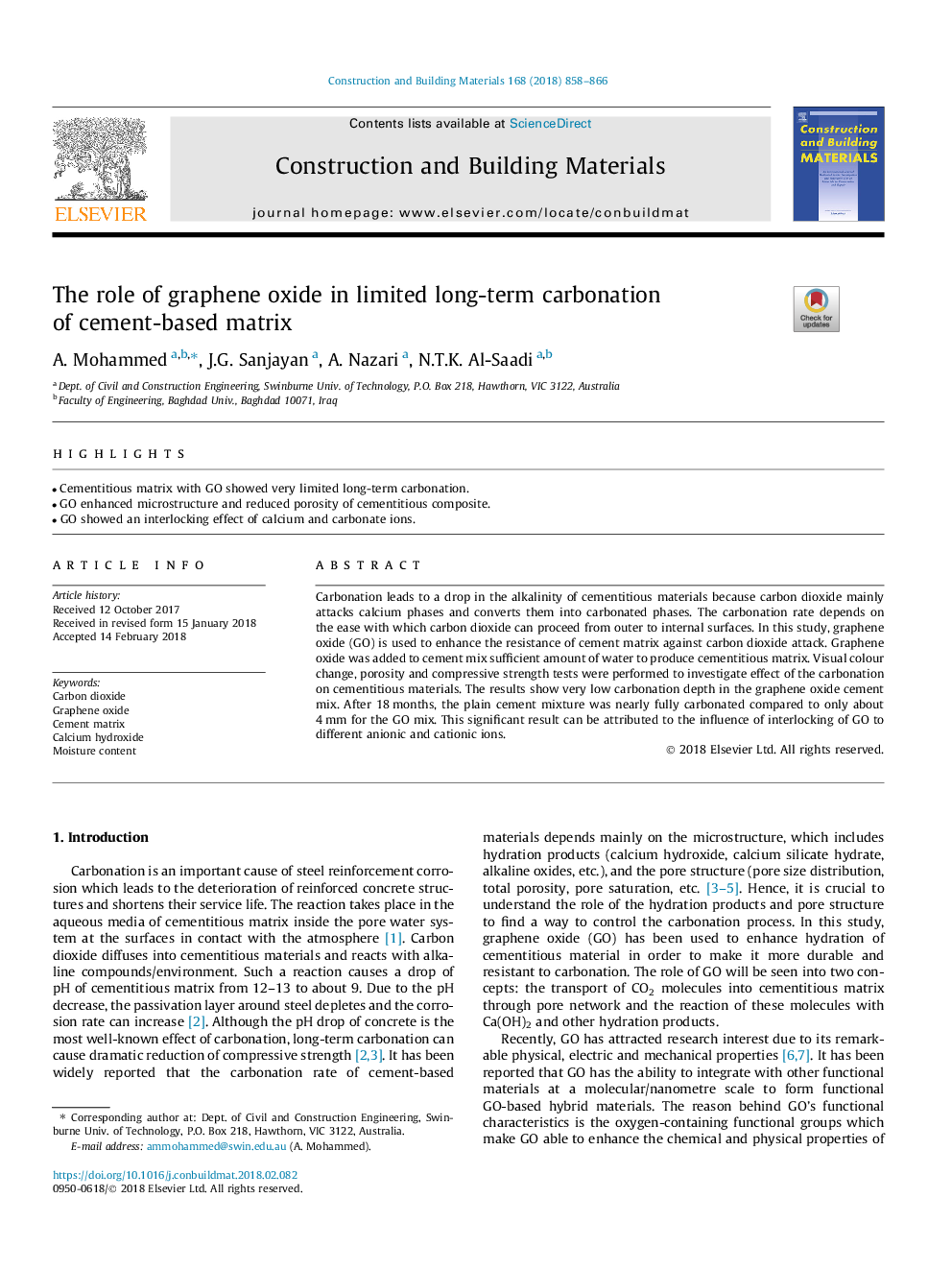| Article ID | Journal | Published Year | Pages | File Type |
|---|---|---|---|---|
| 6715042 | Construction and Building Materials | 2018 | 9 Pages |
Abstract
Carbonation leads to a drop in the alkalinity of cementitious materials because carbon dioxide mainly attacks calcium phases and converts them into carbonated phases. The carbonation rate depends on the ease with which carbon dioxide can proceed from outer to internal surfaces. In this study, graphene oxide (GO) is used to enhance the resistance of cement matrix against carbon dioxide attack. Graphene oxide was added to cement mix sufficient amount of water to produce cementitious matrix. Visual colour change, porosity and compressive strength tests were performed to investigate effect of the carbonation on cementitious materials. The results show very low carbonation depth in the graphene oxide cement mix. After 18â¯months, the plain cement mixture was nearly fully carbonated compared to only about 4â¯mm for the GO mix. This significant result can be attributed to the influence of interlocking of GO to different anionic and cationic ions.
Related Topics
Physical Sciences and Engineering
Engineering
Civil and Structural Engineering
Authors
A. Mohammed, J.G. Sanjayan, A. Nazari, N.T.K. Al-Saadi,
